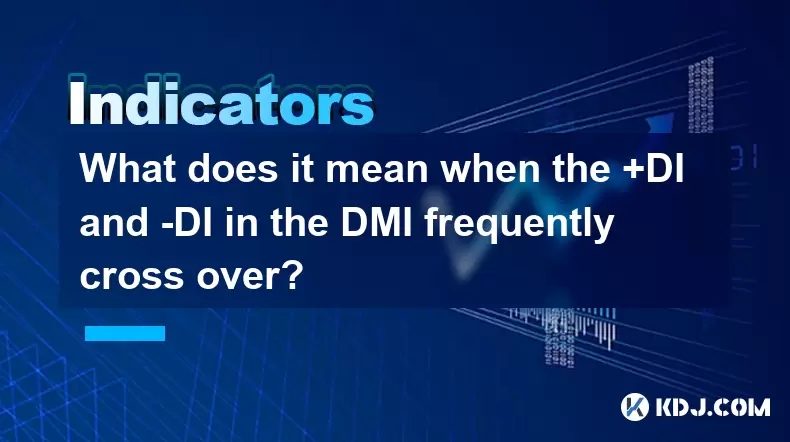-
 Bitcoin
Bitcoin $114800
-0.87% -
 Ethereum
Ethereum $4776
1.26% -
 XRP
XRP $3.035
-0.59% -
 Tether USDt
Tether USDt $0.9997
0.01% -
 BNB
BNB $868.3
-2.21% -
 Solana
Solana $207.8
2.24% -
 USDC
USDC $0.9999
0.00% -
 Dogecoin
Dogecoin $0.2321
-2.70% -
 TRON
TRON $0.3658
1.42% -
 Cardano
Cardano $0.9042
-1.85% -
 Chainlink
Chainlink $25.67
-0.24% -
 Hyperliquid
Hyperliquid $43.96
1.17% -
 Sui
Sui $3.679
-2.11% -
 Stellar
Stellar $0.4091
-1.83% -
 Ethena USDe
Ethena USDe $1.000
-0.01% -
 Bitcoin Cash
Bitcoin Cash $593.4
0.58% -
 Avalanche
Avalanche $25.53
0.89% -
 Hedera
Hedera $0.2476
-1.21% -
 Litecoin
Litecoin $119.7
-1.84% -
 UNUS SED LEO
UNUS SED LEO $9.609
0.34% -
 Toncoin
Toncoin $3.352
-0.91% -
 Shiba Inu
Shiba Inu $0.00001292
-2.45% -
 Uniswap
Uniswap $11.08
-1.13% -
 Polkadot
Polkadot $4.100
-1.09% -
 Cronos
Cronos $0.1609
4.53% -
 Dai
Dai $0.9999
0.00% -
 Bitget Token
Bitget Token $4.706
-0.88% -
 Aave
Aave $350.1
2.03% -
 Monero
Monero $268.0
0.06% -
 Ethena
Ethena $0.7069
-4.77%
What does it mean when the +DI and -DI in the DMI frequently cross over?
Frequent +DI/-DI crossovers in crypto often signal market indecision, especially when ADX is below 20—use higher timeframes and volume to confirm valid trend shifts. (154 characters)
Aug 13, 2025 at 11:35 am

Understanding the DMI and Its Core Components
The Directional Movement Index (DMI) is a technical analysis tool designed to measure the strength and direction of a price trend. It consists of three primary lines: the +DI (Positive Directional Indicator), the -DI (Negative Directional Indicator), and the ADX (Average Directional Index). The +DI reflects upward price movement strength, while the -DI captures downward movement strength. When these two lines—+DI and -DI—frequently cross over one another, it signals dynamic shifts in market momentum. These crossovers are not random noise but potential indicators of changing sentiment. Traders use these signals to anticipate reversals or confirm trend continuation depending on the broader context.
What a +DI/-DI Crossover Indicates
When the +DI crosses above the -DI, it suggests that upward price pressure is gaining strength relative to downward pressure. This could indicate the beginning of a bullish trend or a bullish correction within a larger downtrend. Conversely, when the -DI crosses above the +DI, it shows that selling pressure is intensifying, possibly signaling a bearish move. Frequent crossings mean that neither bulls nor bears are maintaining consistent control. This back-and-forth behavior often occurs in ranging or consolidating markets, where prices move sideways without a clear directional bias. In such conditions, the repeated crossovers may generate false signals if interpreted in isolation.
How to Interpret Frequent Crossovers in Crypto Markets
Cryptocurrency markets are inherently volatile, and this volatility amplifies the frequency of +DI and -DI crossovers. Frequent crossings in assets like Bitcoin or Ethereum may reflect high sensitivity to news, macroeconomic data, or sudden shifts in investor sentiment. For example, if a major exchange announces a security breach or a country announces new crypto regulations, the rapid price reaction can cause the DMI lines to oscillate. In these scenarios, each crossover may represent a short-term shift in momentum rather than a sustainable trend. Traders should assess whether the crossovers coincide with significant volume changes or occur during low-liquidity periods, which can distort signals.
Using ADX to Filter False Signals from Crossovers
To avoid being misled by frequent +DI/-DI crossovers, traders incorporate the ADX line as a filter. The ADX measures trend strength, regardless of direction. When the ADX is below 20, the market is typically range-bound, and crossovers are less reliable. In this context, frequent crossings should be treated as noise. However, when the ADX rises above 25 or 30, it indicates a strengthening trend, and crossovers become more meaningful. For instance, a +DI crossing above -DI with ADX above 30 may confirm the start of a strong bullish trend. Conversely, a -DI crossing above +DI under high ADX could signal a robust bearish phase. Without considering ADX, traders risk acting on weak or indecisive market movements.
Practical Steps to Analyze DMI Crossovers on Trading Platforms
To effectively monitor +DI and -DI crossovers, follow these steps on a crypto trading platform like TradingView or Binance:
- Open the chart of the desired cryptocurrency (e.g., BTC/USDT).
- Click on the “Indicators” button and search for “DMI” or “Average Directional Movement Index.”
- Add the DMI indicator to the chart, ensuring all three components (+DI, -DI, ADX) are visible.
- Adjust the period setting (default is 14) if needed to fine-tune sensitivity—shorter periods increase responsiveness but may generate more false signals.
- Observe the interaction between +DI and -DI lines, noting each crossover.
- Simultaneously monitor the ADX line to assess whether the market has enough directional strength to validate the crossover.
- Cross-verify with volume indicators: rising volume on a +DI crossover supports bullish conviction.
This process enables traders to distinguish between meaningful trend shifts and random fluctuations.
Combining DMI with Other Indicators for Confirmation
Relying solely on DMI crossovers increases the risk of false entries. To improve accuracy, combine DMI with complementary tools:
- Use moving averages (e.g., 50-day and 200-day) to determine the broader trend. A +DI crossover above -DI is more credible when price is above both moving averages.
- Apply RSI (Relative Strength Index) to check for overbought or oversold conditions. A +DI crossover during RSI overbought levels may lack follow-through.
- Incorporate support and resistance levels. A -DI crossover occurring near a strong support zone may fail if buyers step in.
- Monitor on-chain data for Bitcoin or Ethereum, such as exchange inflows or wallet activity, to assess underlying market structure.
This multi-layered approach reduces the likelihood of acting on misleading DMI signals.
Frequently Asked Questions
Can +DI and -DI crossovers predict reversals in cryptocurrency?
Yes, they can suggest potential reversals, but only when supported by other factors. A +DI crossing above -DI after a prolonged downtrend may indicate a reversal, especially if volume increases and the ADX begins to rise. However, in choppy markets, such crossovers often fail to lead to sustained moves.
Is the DMI more effective on certain timeframes in crypto trading?
The DMI tends to produce more reliable signals on higher timeframes like the 4-hour or daily charts. On lower timeframes (e.g., 5-minute), frequent crossovers occur due to micro-volatility, making them less actionable. Swing traders benefit more from DMI on 4H or daily charts than scalpers.
What should I do if +DI and -DI keep crossing but the price doesn’t move?
This typically indicates market indecision or consolidation. Avoid entering new positions based solely on these crossovers. Instead, wait for the ADX to rise above 25 and for price to break a key support or resistance level before acting.
Does the DMI work well with all cryptocurrencies?
The DMI works best with high-liquidity cryptocurrencies like Bitcoin, Ethereum, and Binance Coin. For low-cap altcoins with erratic price action and low volume, the DMI may generate excessive noise due to manipulation or thin order books, reducing its reliability.
Disclaimer:info@kdj.com
The information provided is not trading advice. kdj.com does not assume any responsibility for any investments made based on the information provided in this article. Cryptocurrencies are highly volatile and it is highly recommended that you invest with caution after thorough research!
If you believe that the content used on this website infringes your copyright, please contact us immediately (info@kdj.com) and we will delete it promptly.
- Viral Memes, RWA Platforms, and DePIN Crushers: What's Hot in Crypto?
- 2025-08-24 14:45:20
- Meta's Hypernova Glasses: AR's Next Big Thing?
- 2025-08-24 15:05:15
- Down Under Showdown: Australia vs. South Africa in ODI Cricket
- 2025-08-24 15:10:14
- XYZVerse, Shiba Inu, and the 2025 Bull Cycle: A Meme Coin Evolution
- 2025-08-24 13:05:12
- WLFI Token, BingX, and the Trading Landscape: A New York Perspective
- 2025-08-24 12:45:20
- Aave, Governance, Allocation: Navigating DeFi's Shifting Sands
- 2025-08-24 12:45:20
Related knowledge

What does it mean when the +DI and -DI cross frequently in the DMI indicator but the ADX is flattening?
Aug 11,2025 at 03:15am
Understanding the DMI Indicator ComponentsThe Directional Movement Index (DMI) is a technical analysis tool composed of three lines: the +DI (Positive...

What does the sudden appearance of a "dark cloud cover" candlestick pattern during an uptrend indicate?
Aug 13,2025 at 11:35am
Understanding the 'Dark Cloud Cover' Candlestick PatternThe dark cloud cover is a bearish reversal pattern in technical analysis that typically appear...

What does it mean when the moving average, MACD, and RSI all send buy signals simultaneously?
Aug 11,2025 at 01:42pm
Understanding the Convergence of Technical IndicatorsWhen the moving average, MACD, and RSI all generate buy signals at the same time, traders interpr...

What does it mean when both the KDJ indicator and the RSI show overbought signals simultaneously?
Aug 13,2025 at 11:35am
Understanding the KDJ Indicator in Cryptocurrency TradingThe KDJ indicator is a momentum oscillator derived from the Stochastic Oscillator, widely use...

What does it mean when the price is trading above the SAR indicator but the red dots are densely packed?
Aug 09,2025 at 11:49pm
Understanding the SAR Indicator and Its Visual SignalsThe SAR (Parabolic Stop and Reverse) indicator is a technical analysis tool used primarily to de...

What does it mean when the candlestick chart forms a "Morning Star" but trading volume is sluggish?
Aug 12,2025 at 06:28pm
Understanding the Morning Star Candlestick PatternThe Morning Star is a three-candle bullish reversal pattern commonly observed in cryptocurrency pric...

What does it mean when the +DI and -DI cross frequently in the DMI indicator but the ADX is flattening?
Aug 11,2025 at 03:15am
Understanding the DMI Indicator ComponentsThe Directional Movement Index (DMI) is a technical analysis tool composed of three lines: the +DI (Positive...

What does the sudden appearance of a "dark cloud cover" candlestick pattern during an uptrend indicate?
Aug 13,2025 at 11:35am
Understanding the 'Dark Cloud Cover' Candlestick PatternThe dark cloud cover is a bearish reversal pattern in technical analysis that typically appear...

What does it mean when the moving average, MACD, and RSI all send buy signals simultaneously?
Aug 11,2025 at 01:42pm
Understanding the Convergence of Technical IndicatorsWhen the moving average, MACD, and RSI all generate buy signals at the same time, traders interpr...

What does it mean when both the KDJ indicator and the RSI show overbought signals simultaneously?
Aug 13,2025 at 11:35am
Understanding the KDJ Indicator in Cryptocurrency TradingThe KDJ indicator is a momentum oscillator derived from the Stochastic Oscillator, widely use...

What does it mean when the price is trading above the SAR indicator but the red dots are densely packed?
Aug 09,2025 at 11:49pm
Understanding the SAR Indicator and Its Visual SignalsThe SAR (Parabolic Stop and Reverse) indicator is a technical analysis tool used primarily to de...

What does it mean when the candlestick chart forms a "Morning Star" but trading volume is sluggish?
Aug 12,2025 at 06:28pm
Understanding the Morning Star Candlestick PatternThe Morning Star is a three-candle bullish reversal pattern commonly observed in cryptocurrency pric...
See all articles

























































































